Renting a car in Japan is a great option for those who wish to explore more remote and less-travelled areas of the country. While Japan’s infrastructure is excellent and trains, buses, and subways can be used to reach many popular destinations, a car rental is necessary for visiting some of the country’s most beautiful but remote locations.
Some examples of such places include the stunning landscapes of Hokkaido, or the oldest hotel in the world. If you plan to travel to these areas and have a more enjoyable experience, it is recommended to rent a car.
However, it is important to note that there are certain things to consider when renting a car and driving in Japan, and this guide will provide all the necessary information.
Table of Contents
- What are the requirements to rent a car?
- What is an International Driving Permit?
- Car Rental Companies in Japan
- Picking Up your Rental Car
- Car Rental Rates in Japan
- The Rental Car
- Electronic Toll Collection Card (ETC)
- Traffic Rules in Japan
- Driving Experience & Tips
- Driving in Tokyo
- Driving in rural Japan
- Petrol Stations in Japan
- How to fuel your car in Japan
- Services (Rest Stops) in Japan
- Parking in Japan
- More tips for Japan
- Frequently Asked Questions
What are the requirements to rent a car?
The minimum age for driving in Japan is 18 years. You need your driving licence as well as an International driving permit with you.
What is an International Driving Permit?
International driving permits are issued in your home country. It is a paper document that accompanies (not replaces) your driving licence. With an international driving permit, you can drive in Japan for up to one year.
Anyone with an International Driving Permit (IDP) issued abroad under the 1949 Geneva Convention on Road Traffic can drive a car in Japan in accordance with Japanese laws.
🇬🇧 In the UK, go to a Post Office to get an IDP. Ask for “International Driving Permit 1949” which is the type you will need in Japan. It’s done in about 10 mins, and costs about £5. Link to the Post Office website.
🇺🇸 In the USA, you can get your International Driving Permit from an AAA Branch. It costs about $20. You will need two original passport pictures and a completed application form. Link to the AAA website.
🇪🇺 If you have a driving licence from Switzerland, Germany, France, Belgium, Monaco, or Taiwan, and you meet certain requirements, you will be able to drive in Japan. You will need to have an official Japanese translation of your driving licence.
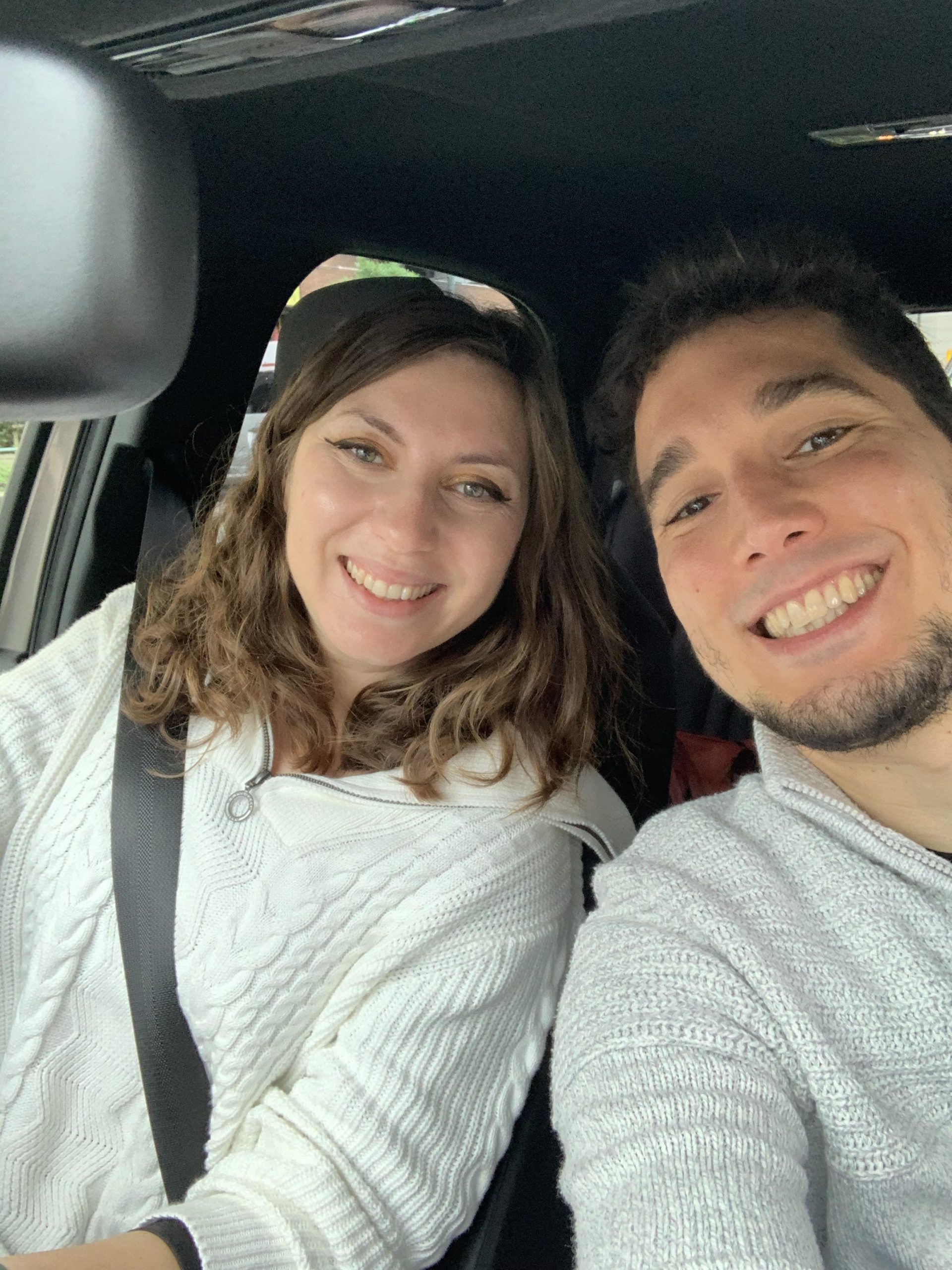
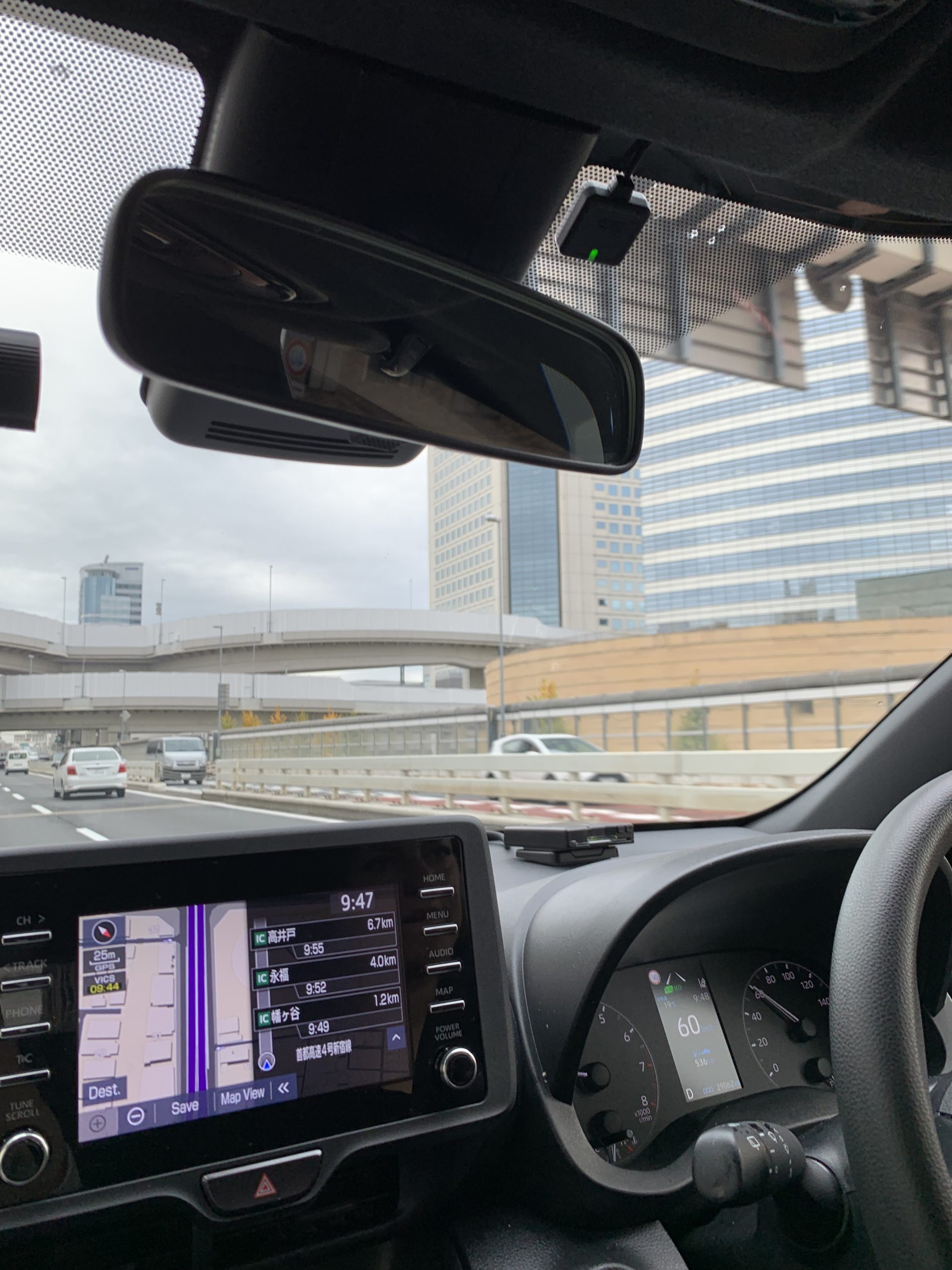
Car Rental Companies in Japan
There are a few popular rental companies in Japan, including:
I rented our car from Nippon Rent A car in Shinjuku (see Map) because their office is close to the highway leading out of Tokyo. Getting onto the highway quickly helps you avoid driving in city traffic.
Each of the above companies has serval offices dotted all around Japan. In Tokyo, you will even find the same company in multiple locations for ease and convenience. I rented our car via trip.com because the website had an easy-to-use, English interface and good rates.
Picking Up your Rental Car
We showed up in Shinjuku in the morning to pick up our pre-booked car. I recommend pre-booking as most cars are gone by 9am-10am. Pre-booking also gives you better rates.
At the desk in Shinjuku, everyone spoke good English. The staff at the rental company took a picture of our passports, driving licences and International Driving Permits. We filled in some forms together – for insurance purposes – and received the ETC card (see later). They talked to use about some of the traffic rules that unique to Japan. These were also written down and included in a folder with all the other paperwork.
After about 15 mins, we were given the key and were shown to our car. We also took a few pics of the car, just in case, loaded our luggage and were ready to go.
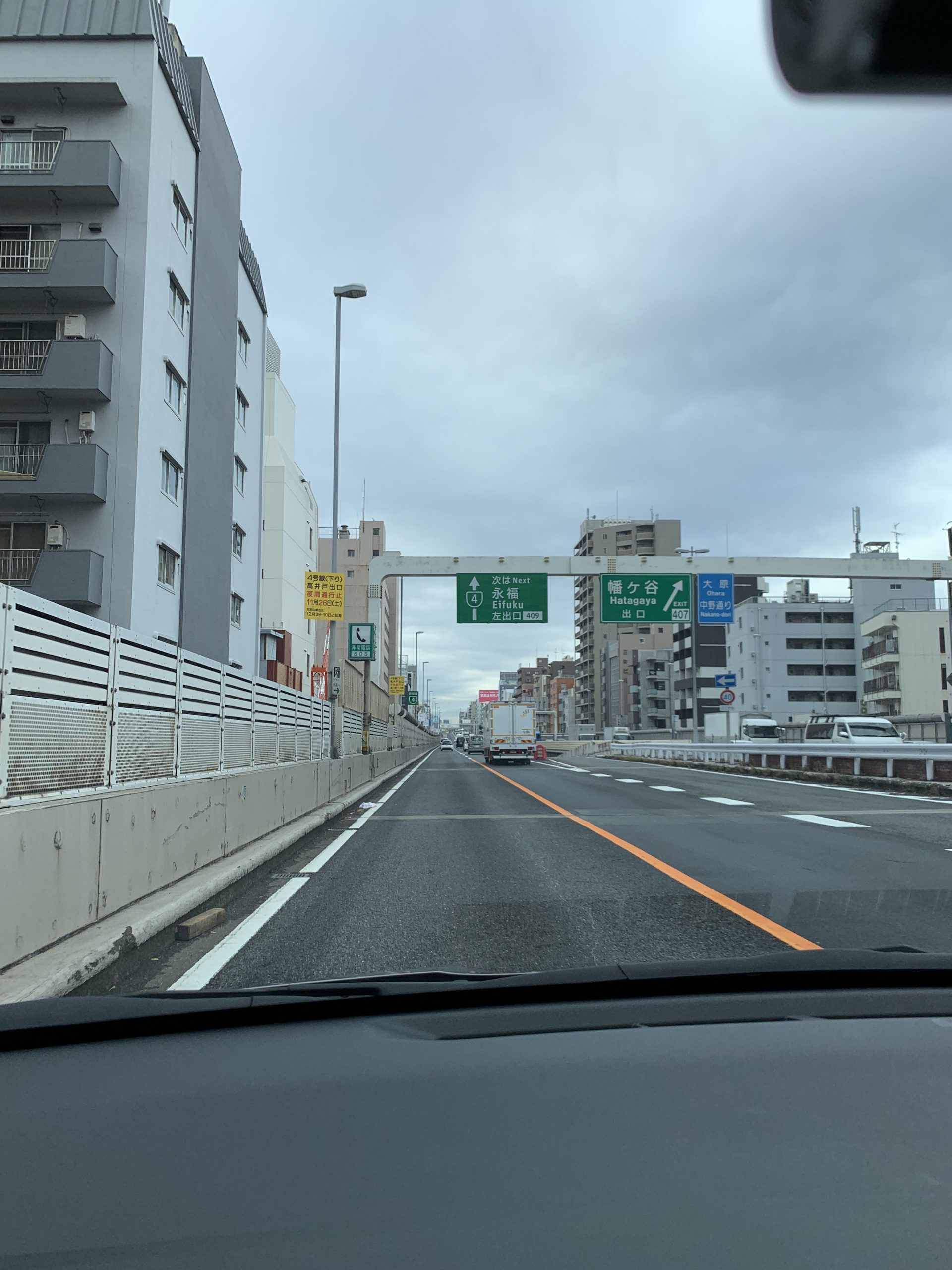
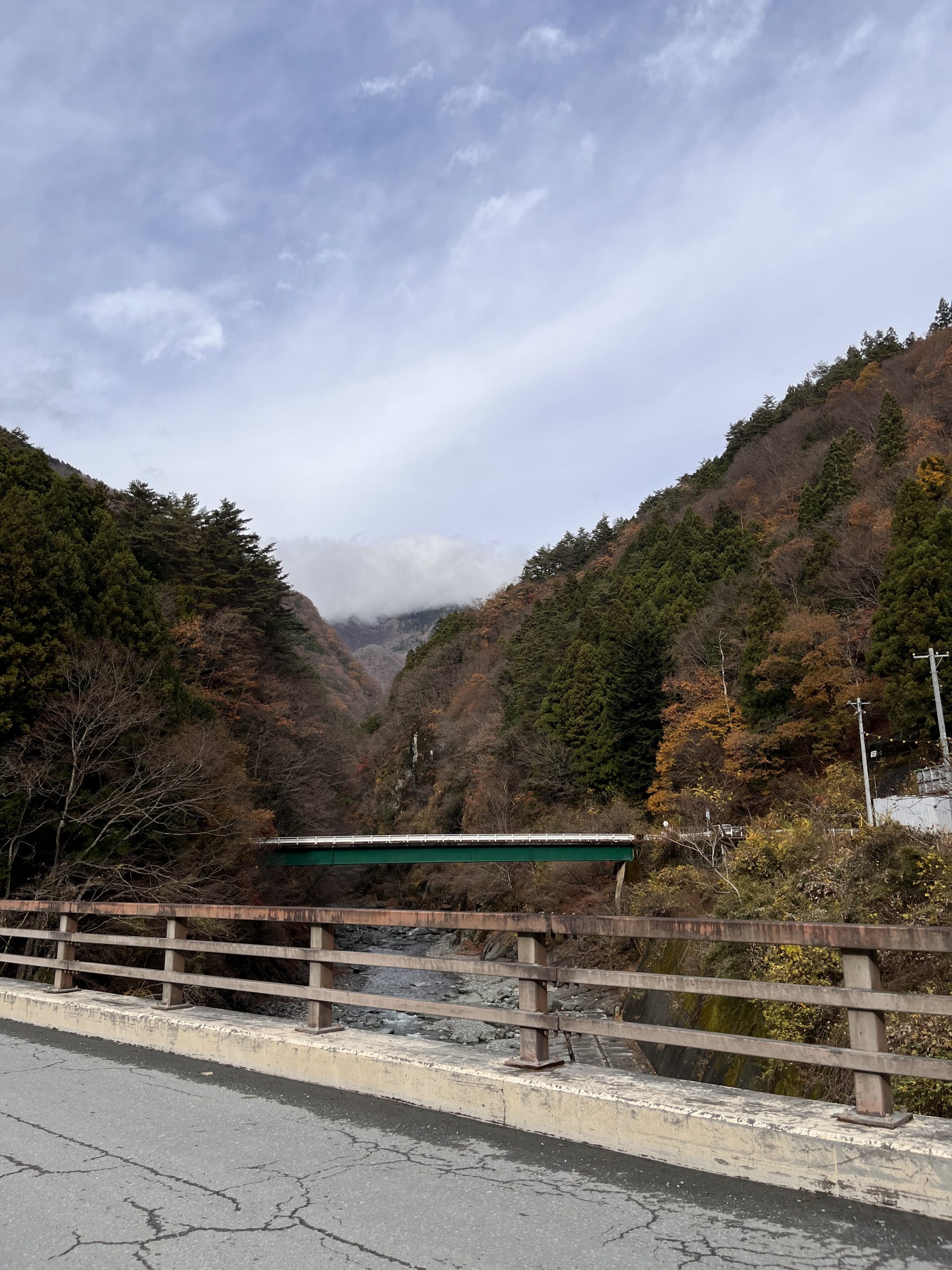
Car Rental Rates in Japan
The cost of renting a car in Japan typically ranges from 5,000 yen for a sub-compact car per 24-hour period to 20,000 yen for a van. During peak seasons, rates may be higher.
For example, we paid 10,000 yen for our compact car for 2 days, plus some supplement for full insurance with zero excess fee.
The rental prices usually include unlimited mileage, taxes, and a minimum insurance fee of 1,000 yen per day for damage, injury, and liability, but do not cover non-operation fees for damage to the car. I recommend buying a full insurance coverage for your rental. The price difference is minimal, but in case of an accident, you will be very happy that you are fully covered.
When we received the car, it had a full tank of petrol, and we were expected to return it in the same condition. There are many gas stations in Japan, and it is best to fill up within a 5-mile radius of the rental office to avoid additional charges for returning the car with less fuel.
Most rental car outlets allow cars to be dropped off at a different location, but there may be additional fees for locations further away. The fee can be quite high, especially for dropping off a car in a different city. Most companies do not allow cars rented in Hokkaido to be dropped off outside of Hokkaido and vice versa.
Additional options such as child seats and snow tires can be rented with your car. Snow tires are free of charge in snowy regions of Japan during winter.
The Rental Car
My Japanese rental car came fairly clean, easy to use and with decent mileage on board. The only thing I didn’t like was the cigarette smell lingering in the car still.
Most rental cars have automatic transmission, making it much easier to drive in Japan. I noticed that some Japan rental car companies offer cars with manual transmission.
Before you leave, it is essential to familiarize yourself with the operation of the turn signals, lights, and windshield wipers. In my case, for example, the turn signal in the rental car was positioned on the opposite side compared to what I am accustomed to in my own Suzuki back home.
Electronic Toll Collection Card (ETC)
The ETC card is used at toll gates when you enter toll roads. Almost all rental cars will be equipped with an ETC card reader. Having an ETC card will make your trip more relaxed as you won’t have to stop and pay at each tollbooth. Most highways and expressways in Japan are subject to tolls.
I recommend that you reserve an electronic toll collection card when you book your card. If there is no option for this during the booking process, email the office and ask to reserve one. (They sometimes run out of ETC cards at smaller car rental offices)
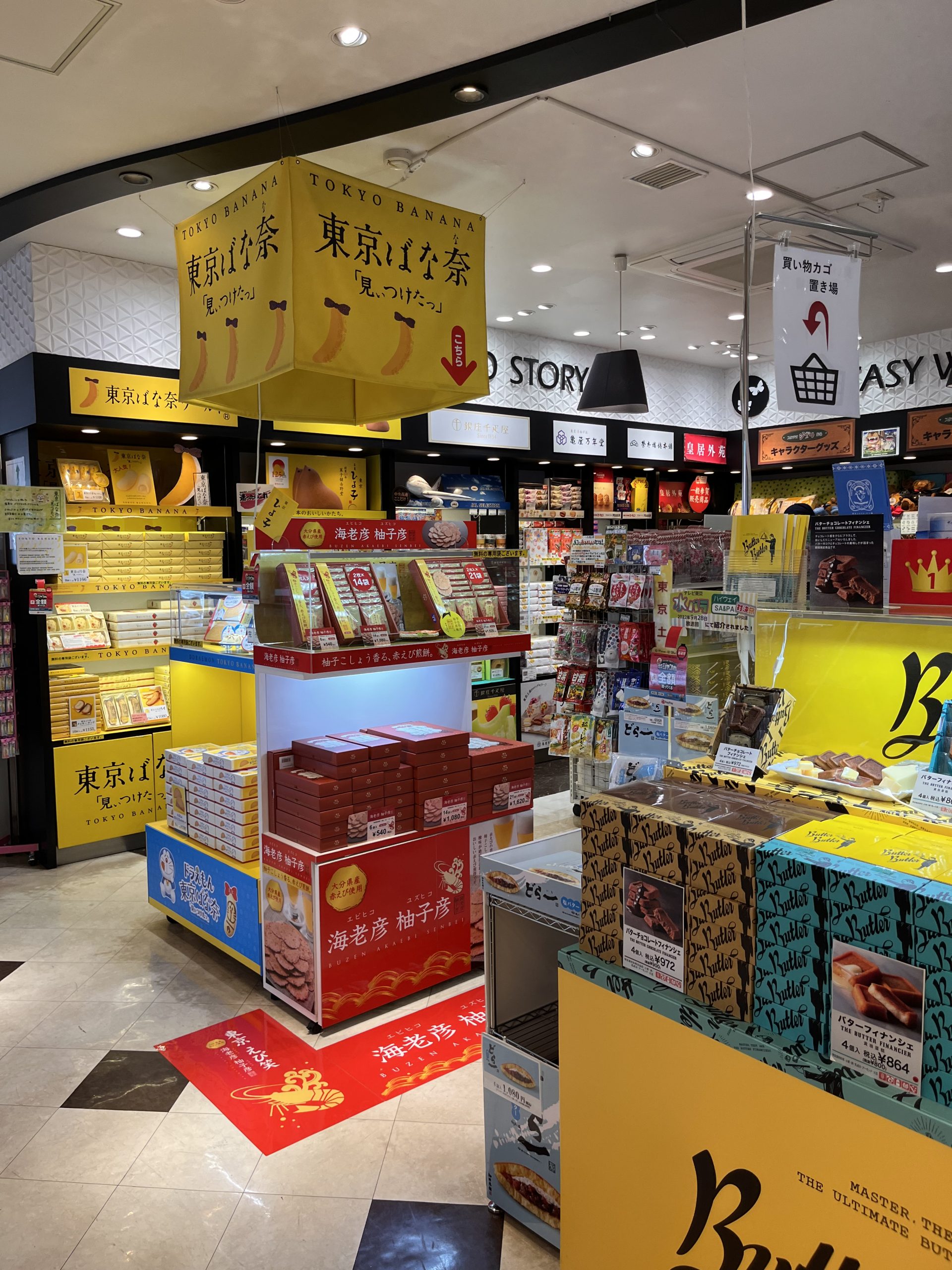
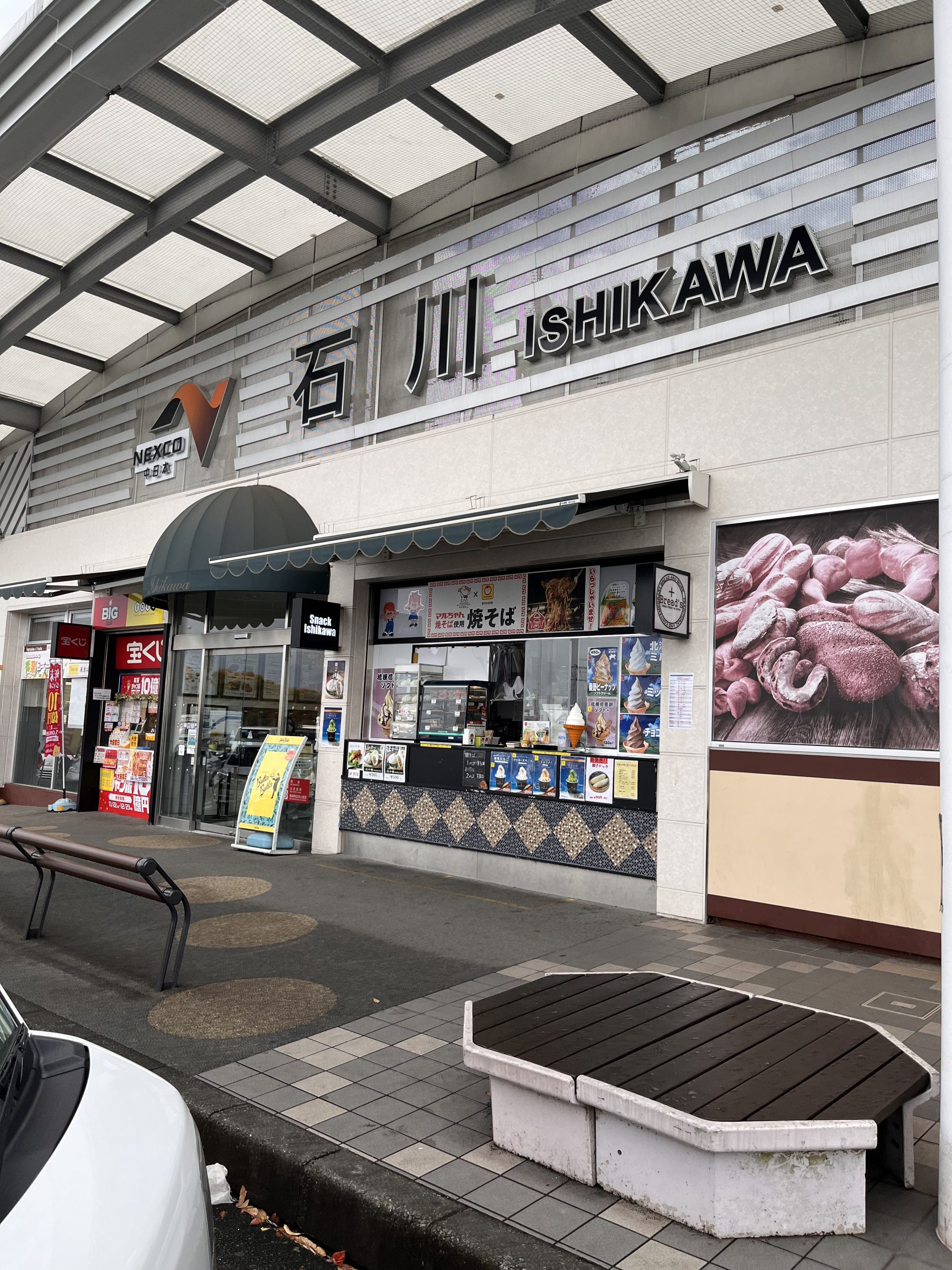
Traffic Rules in Japan
In Japan, driving is on the left side, the same as in the UK, Australia or New Zealand.
- Drivers must keep to the left, and allow passing vehicles to overtake on the right.
- Drivers must yield to pedestrians.
- You must not drive intoxicated. If your blood alcohol concentration (BAC) of 0.03 or above, you are considered legally intoxicated and guilty of drink-driving.
- You must not exceed the allowed number of passengers or load.
- While driving a vehicle, you must not use a cell phone or be distracted by the car navigation system.
- When you drive a vehicle, everyone in the car must wear a seatbelt.
- When you drive with an infant younger than six years old, you must place the infant securely in a child seat.
There will be some traffic signs which are different from what you are used to. The most notable difference I found was in the stop sign. The stop sign is an inverted red triangle, as you will see in the picture below.
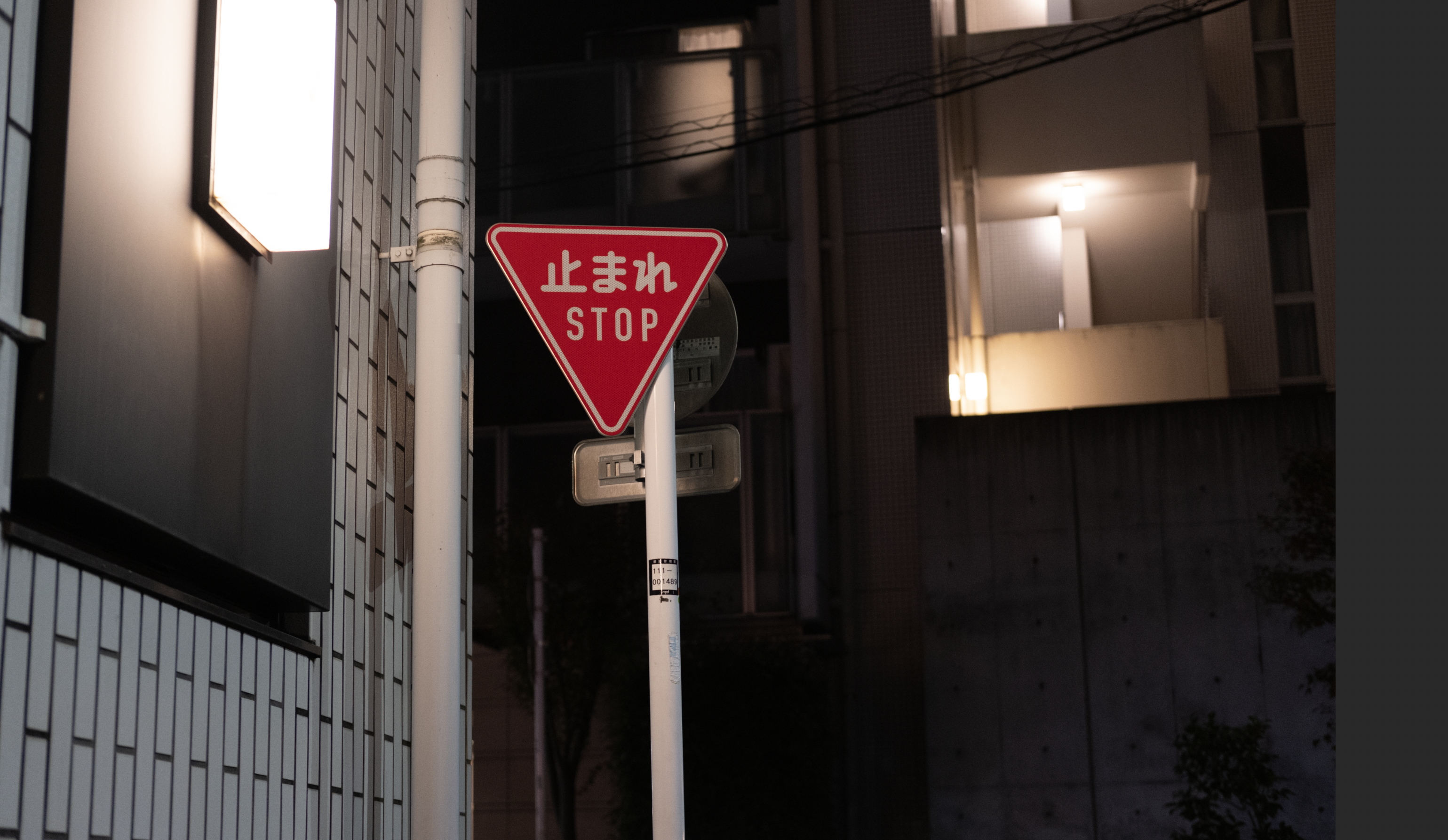
Driving Experience & Tips
Driving in Japan is generally considered to be a safe and efficient experience. The roads are well-maintained, and traffic tends to be orderly. Drivers in Japan are usually polite and obey the rules of the road. However, it is important to note that driving in Japan can be challenging due to factors such as narrow roads, tight parking spaces, and confusing traffic signs.
In my experience, Japanese drivers often go over the speed limit – I assume they know that there are no speed cameras in the area. As a foreigner, you should respect the speed limit, and keep your distance from other drivers. There were times I felt that some drivers were rushing me to go a little faster, especially on single carriageways.
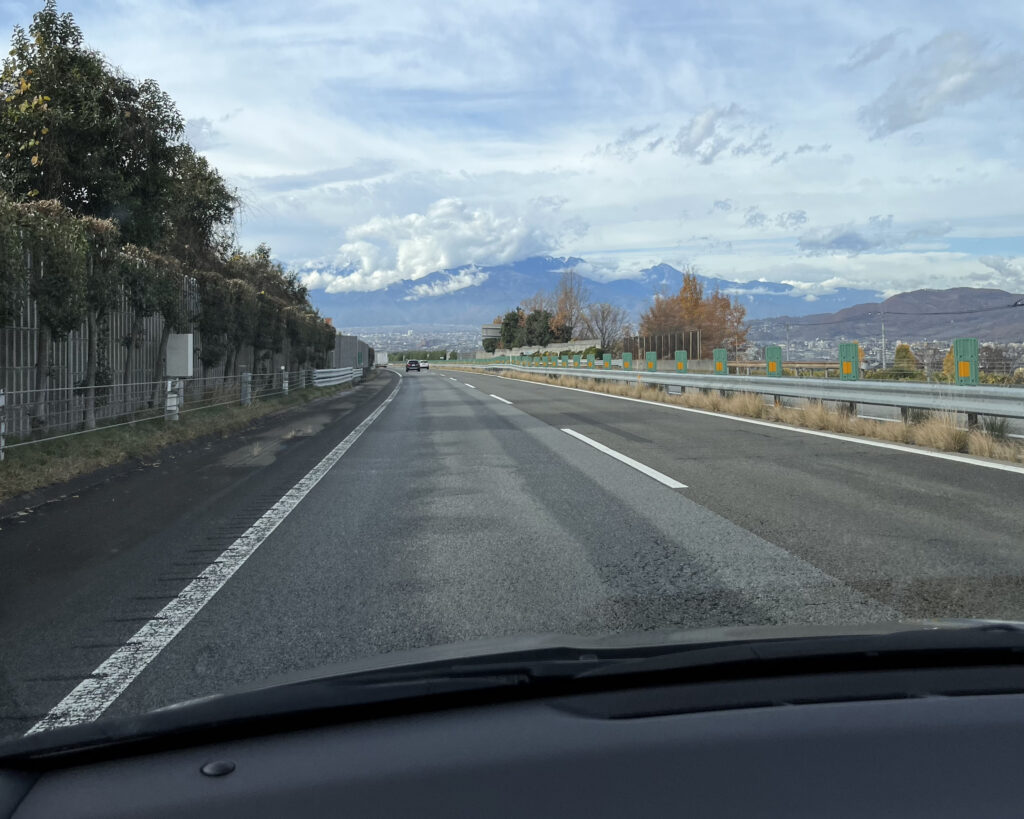
Driving in Tokyo
Driving in Tokyo can feel hectic. I strongly recommend using a GPS to help you navigate. Google Maps also works perfectly fine. Make sure you respect the signs and get in line before your turn. We used our pocket Wi-Fi for Google and it was perfect. Most cars will have a connector for your phone to see the maps on the car’s built-in screen.
Drivers are usually polite and can accommodate if you need to change lanes – which can happen a lot when you are not familiar with the roads.
Driving in rural Japan
Driving in rural Japan was very relaxing for me. I found it similar to driving in the UK. The roads were well maintained and marked. We encountered very few cars once we were off the main highway. Some roads can be narrow. Mountain roads are winding and can be scary if you are not used to driving on them. Luckily, they are typically well-marked and there is a safety barrier on the side.
When driving through mountainous regions, it’s common to encounter wet tunnels, which can make the road slippery. If you drive in winter, it’s important to check the weather forecast and road conditions beforehand to ensure that the roads are safe to travel on. It’s worth noting that mountain roads may be closed due to heavy snowfall or weather-related damage.
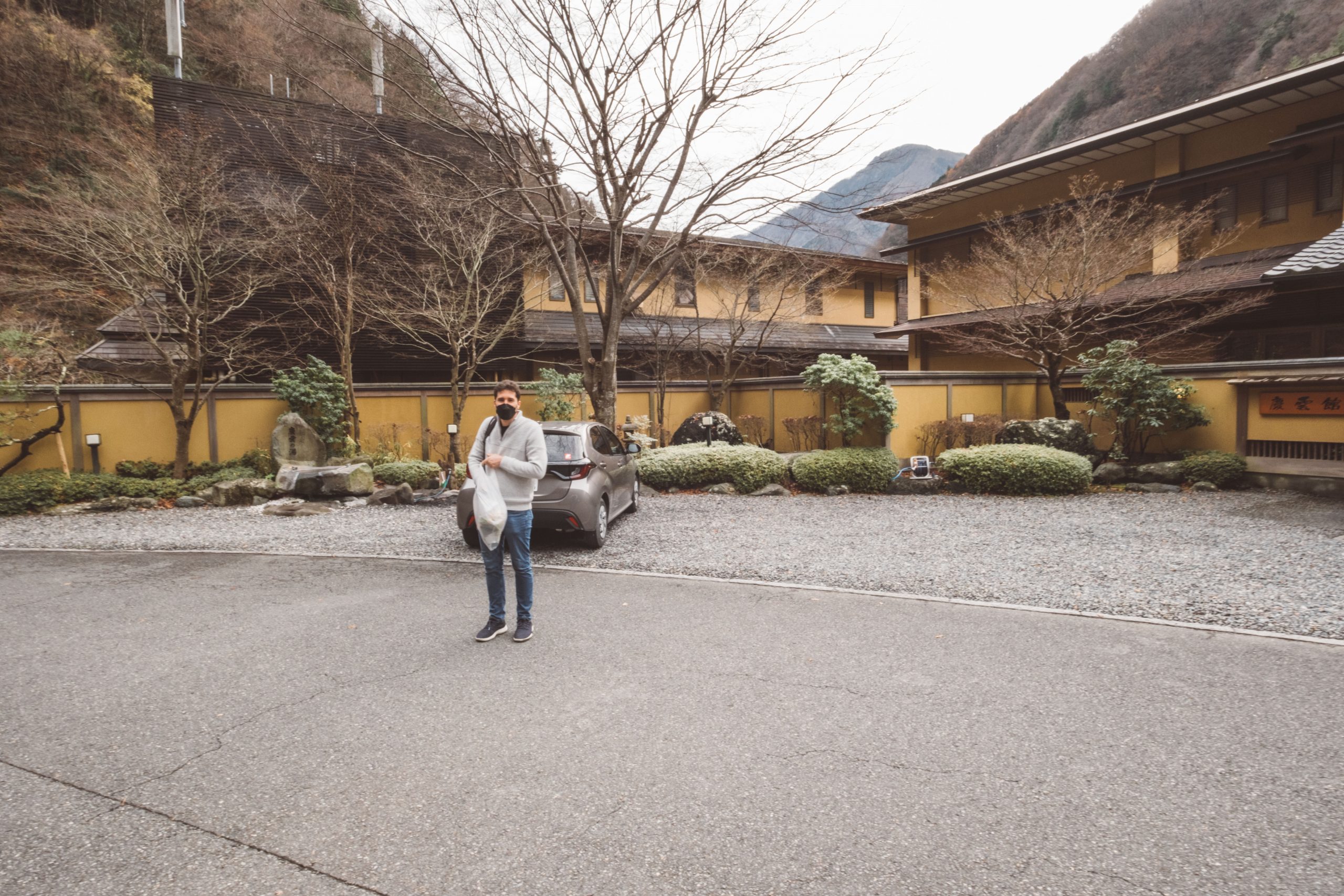
Petrol Stations in Japan
There are plenty of petrol stations (gas stations) spread across the country, and they usually provide full service, although self-service options have become more common lately. While some stations close during the night, others remain open 24 hours a day. Both high octane and diesel fuel are readily accessible. You can pay for fuel using either a credit card or cash.
When renting a car, it’s crucial to determine the specific type of fuel it requires. The staff at the car rental services will show you the colour of the fuel you need. There are also markings on the fuel cap.
- Petrol types & colours:
- 🟥 “Regular unleaded” – Red
- 🟨 “High-octane” – Yellow
- 🟩”Diesel” – Green
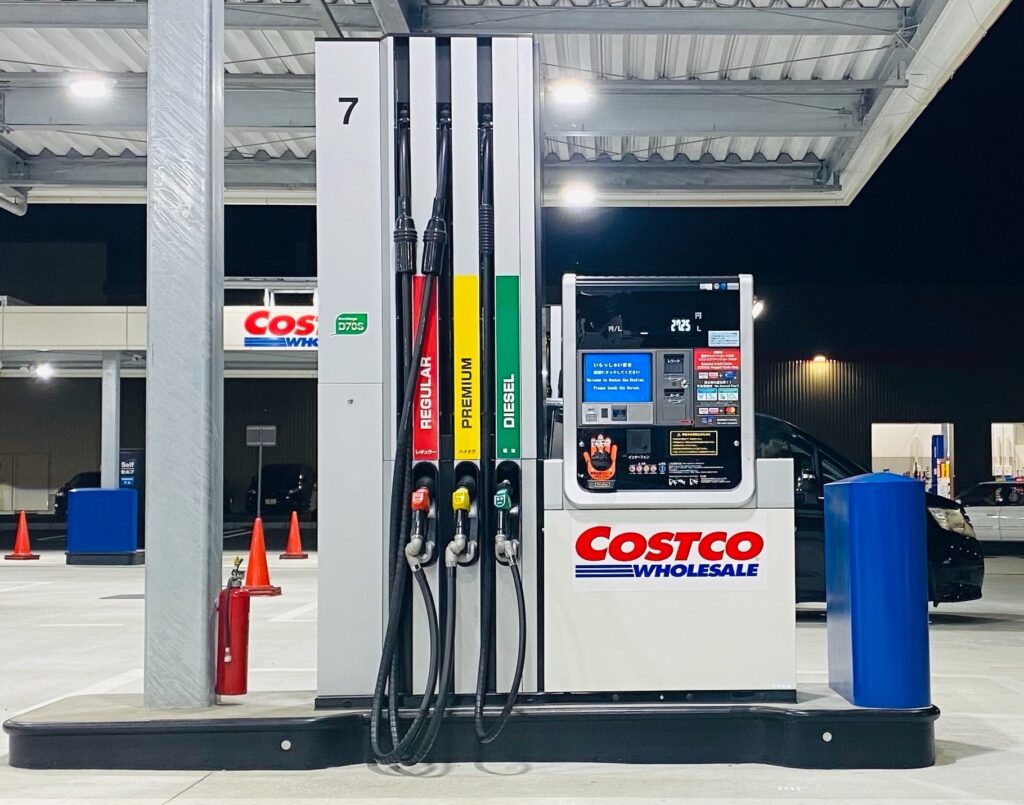
How to fuel your car in Japan
When getting petrol at a full-service station, you may be directed to a stall by an attendant. You should park your car, roll down your window, and turn off the engine. You will need to tell the attendant the type of fuel you need, whether you need a half or full tank, and how you will pay (cash or credit card).
- Get in the bay and park
- Roll down your window and stop the engine
- Show or tell the attendant what type of fuel you need and how much
- Pay by card or cash
Depending on the petrol station, the attendant may also offer you a wet towel to clean your dashboard or ask to take your rubbish.
Self-service stations typically have Japanese and English language menus. We used a self-service petrol station, and it’s very straightforward. We used our card, selected the petrol type and fuelled the car.
- Get in the bay and park
- Stop the engine
- Using the machine, select the fuel type and amount
- Fill up the car
- Pay by card
Services (Rest Stops) in Japan
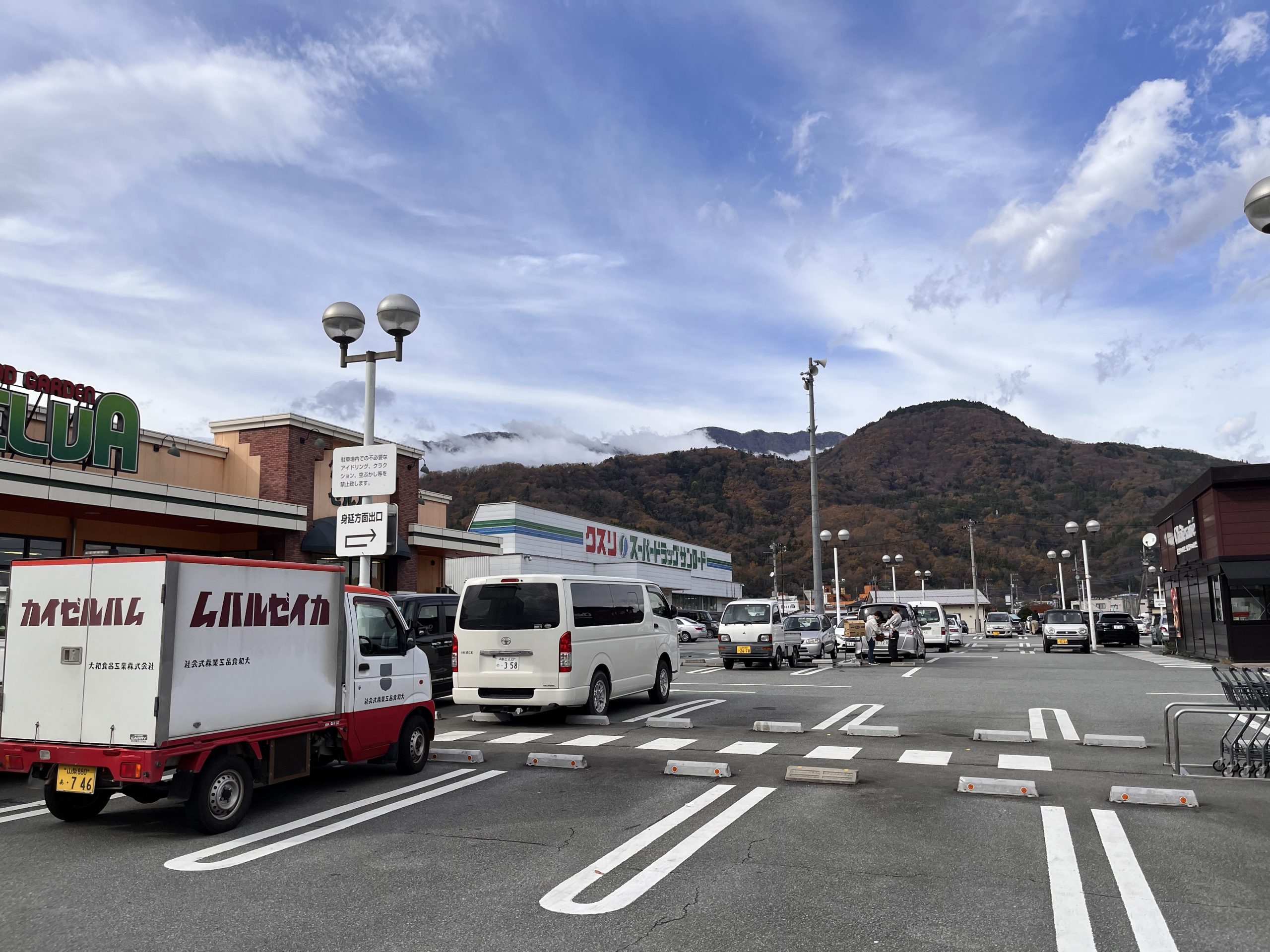
There are numerous services along the express way in Japan which are clearly marked with large signs. Services don’t always come with petrol stations. There are toilets, cafés, restaurant and/or a shop to buy treats, food, and drinks.
Some Japanese rest stops are famous for the local foods they serve.
The toilets in service spaces are very clean and well maintained. There is ample parking space around the main service building, and it’s easy to get off and on the main road.
If you are driving in rural areas, Google Maps can help you find local shops and supermarkets that have a rest area and toilets. Most towns have at least one large retail park.
Parking in Japan
In Japan, the parking experience can vary depending on your location. In urban areas, parking can be expensive and difficult to find, with many garages charging high hourly rates. Because of this, I suggest that you pick the car from the rental offices as early as possible and start your journey right away.
In rural areas, parking is often more readily available, but may still be subject to regulations, such as designated parking areas for cars and motorcycles. There are also parking lots designated for tourists and people who want to park their car for a longer period of time.
Most rural ryokans will have parking for visitors. Rural and off the beaten path attractions also have parking available – sometimes for a fee.
More tips for Japan
Japan is a fascinating country with a rich culture and history. There are many things to see and do, but it’s also important to be aware of some customs and practices to make your trip more enjoyable.
I love Japan and visit regularly. Make sure you check how to plan a trip to Japan and have a look at our Japan itineraries.
I wrote extensive guides for Tokyo, Kyoto and Osaka including where to stay in Tokyo, where to stay in Kyoto and where to stay in Osaka.
And finally, no trip to Japan is complete without trying all the Japanese food. I recommend sampling lots of street food too. And finally, don’t forget to check what to wear and how to pack for your Japan trip.
Frequently Asked Questions
Can tourists rent a car in Japan?
Yes, absolutely. You need to be over 18, have a valid driving licence, an International Driving Permit and your passport. I recommend booking your car in advance as during peak season cars tend to be fully booked.
Is it difficult to drive in Japan?
Driving in Japan can be a different experience compared to driving in other countries, especially if you’re used to driving on the right-hand side of the road. Here are some factors you should consider:
Left-hand driving: In Japan, vehicles drive on the left side of the road. If you come from a country where right-hand driving is the norm, adjusting to driving on the opposite side can be challenging. It requires extra attention and concentration until you become familiar with the traffic flow.
Road signs and markings: Japanese road signs and markings may be unfamiliar if you’re not accustomed to the local system. However, major cities and popular tourist areas often have signs in both Japanese and English, making navigation easier for international visitors.
Road infrastructure: Japanese roads are generally well-maintained, but some older roads in rural areas might be narrow and winding. Urban areas, especially Tokyo, can have complex road networks, and traffic congestion can be common during peak hours.
Traffic rules and regulations: Familiarize yourself with Japanese traffic rules and regulations before driving. Speed limits are typically lower in Japan compared to some other countries. It’s important to obey the rules, including proper seatbelt usage and adhering to parking regulations.
Language barrier: While major cities may have signs and instructions in English, it’s beneficial to have some basic knowledge of Japanese road vocabulary. GPS systems and navigation apps can be helpful, but having a map or a translation tool can also be handy.
Parking: Finding parking spaces in urban areas can be a challenge, and parking fees can be expensive. Additionally, some roads are narrow, and parking is not always readily available.
Despite these considerations, driving in Japan is generally safe and manageable. If you’re uncertain about driving, public transportation options such as trains and buses are widely available and convenient for getting around the country.
Is it expensive to drive in Japan?
Yes, it is expensive to drive in Japan. While rentals are affordable, the expressway comes with tolls which are very pricey. For our return road trip from Tokyo to Nishiyama Onsen, I paid £50 just for the tolls. Fees can quickly add up when driving in Japan.
Is it worth it to rent a car in Japan?
Yes, definitely! It’s worth renting a car if you want to visit rural attractions which are difficult to get to by public transport. For urban areas, trains, and buses are a much better option.

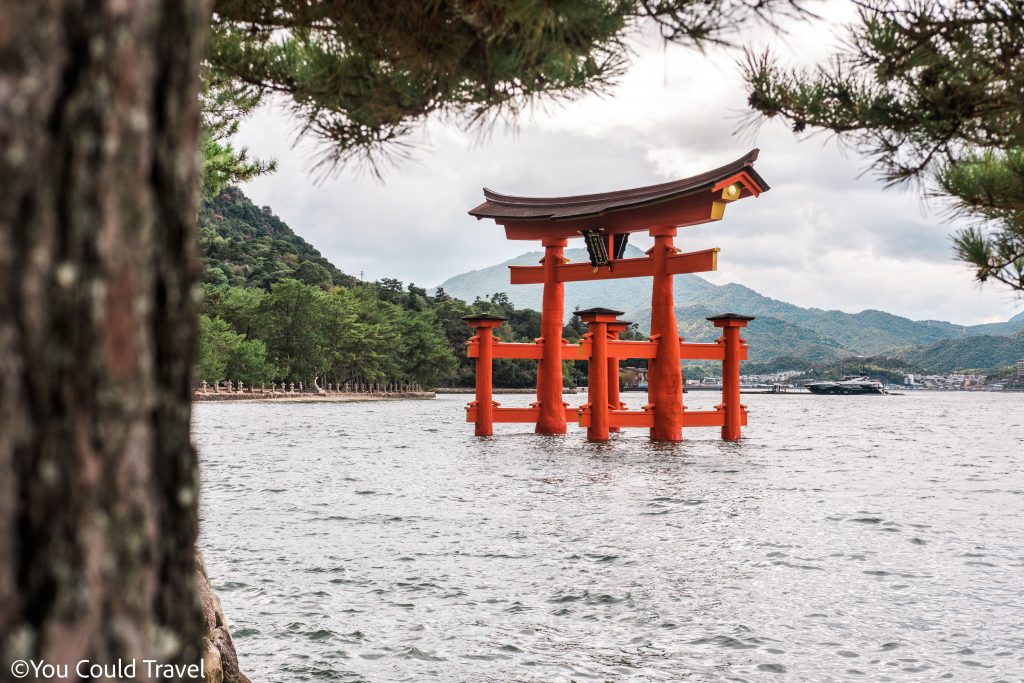
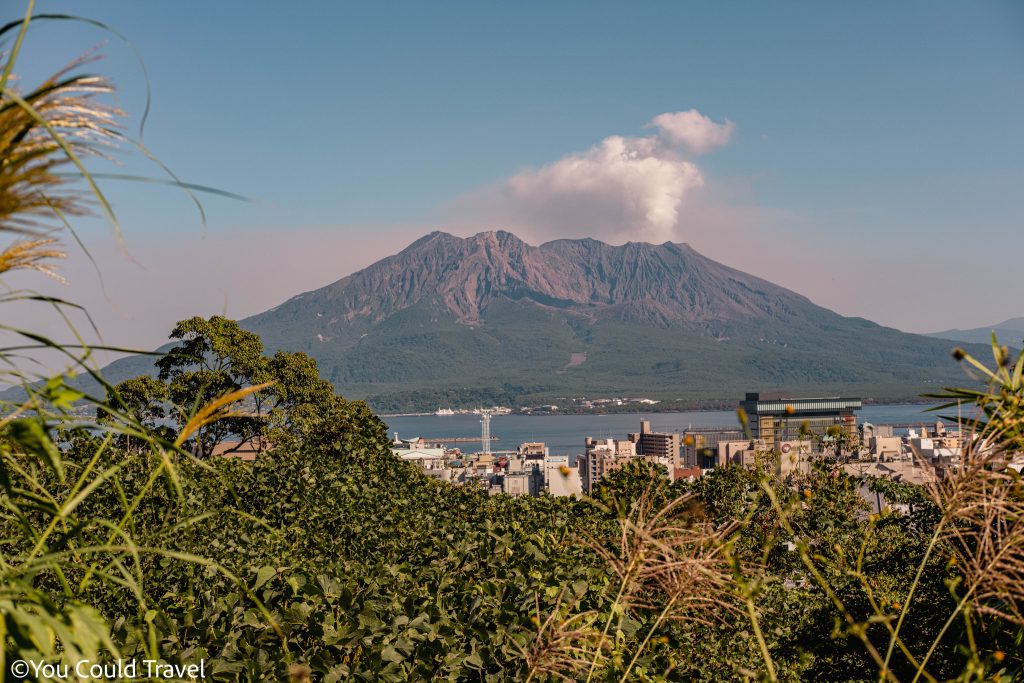
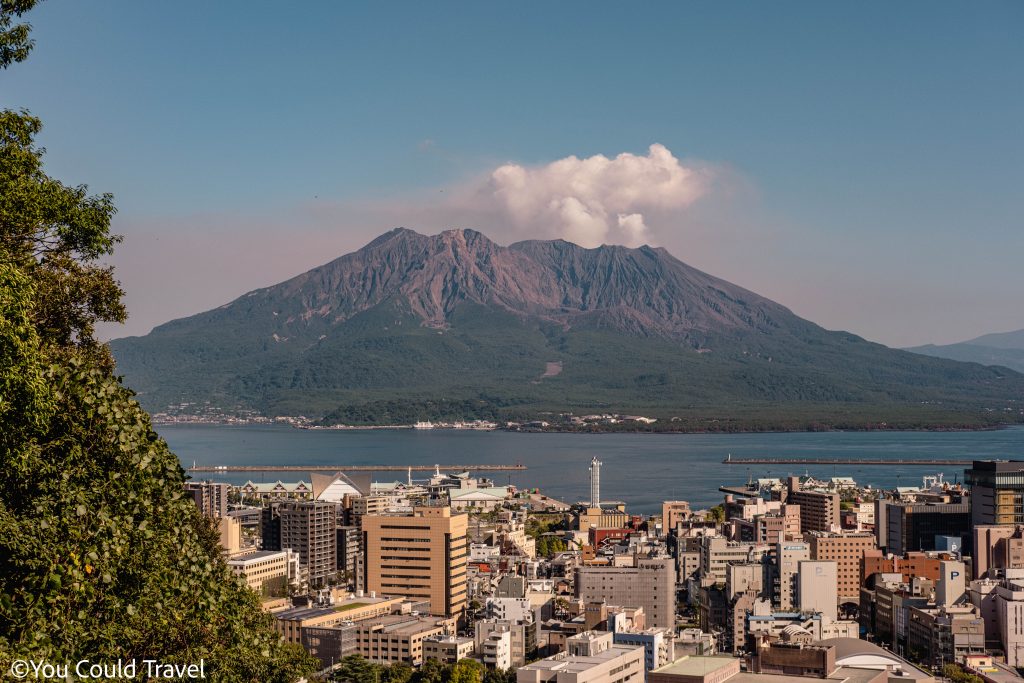
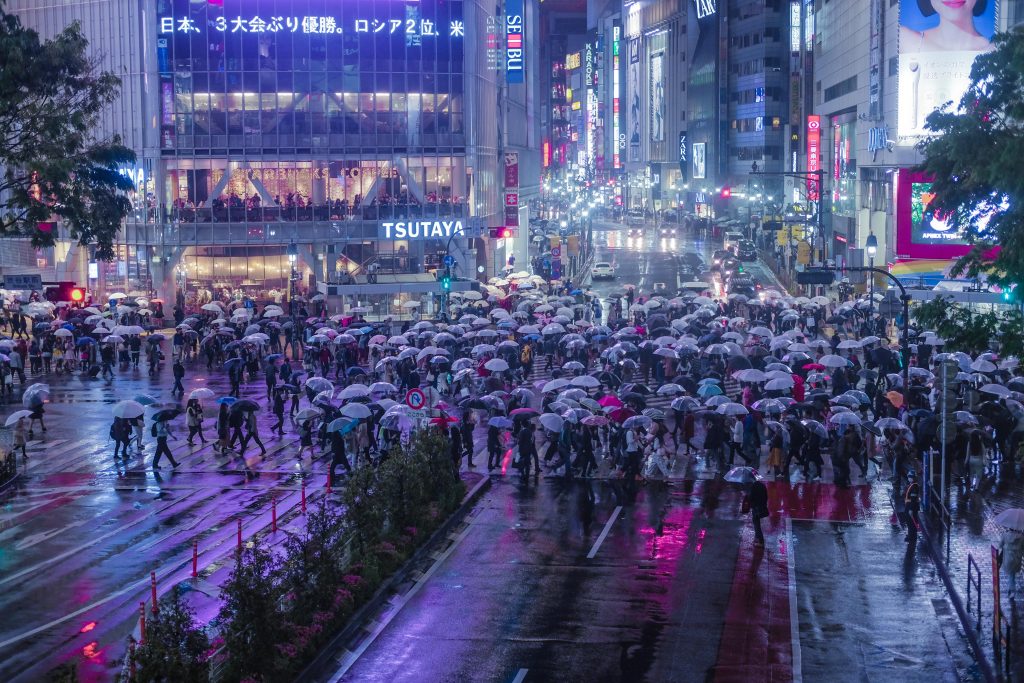
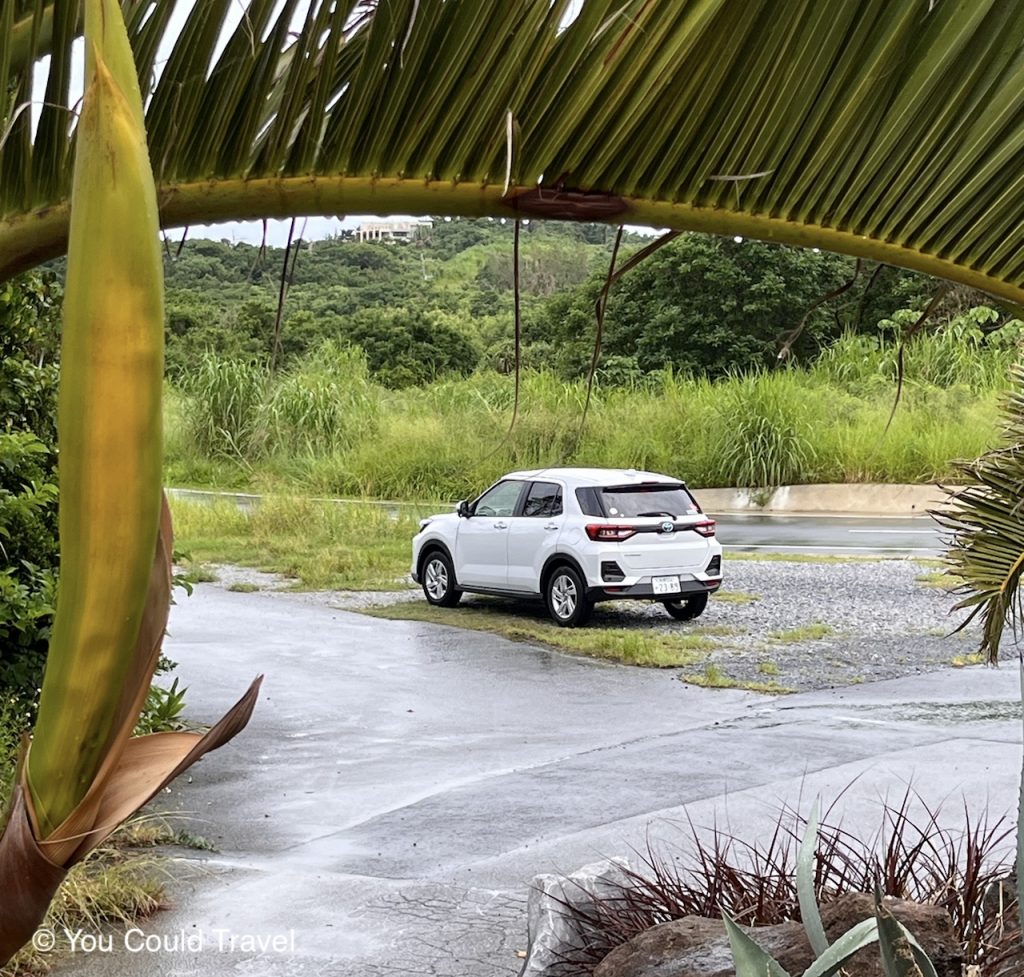
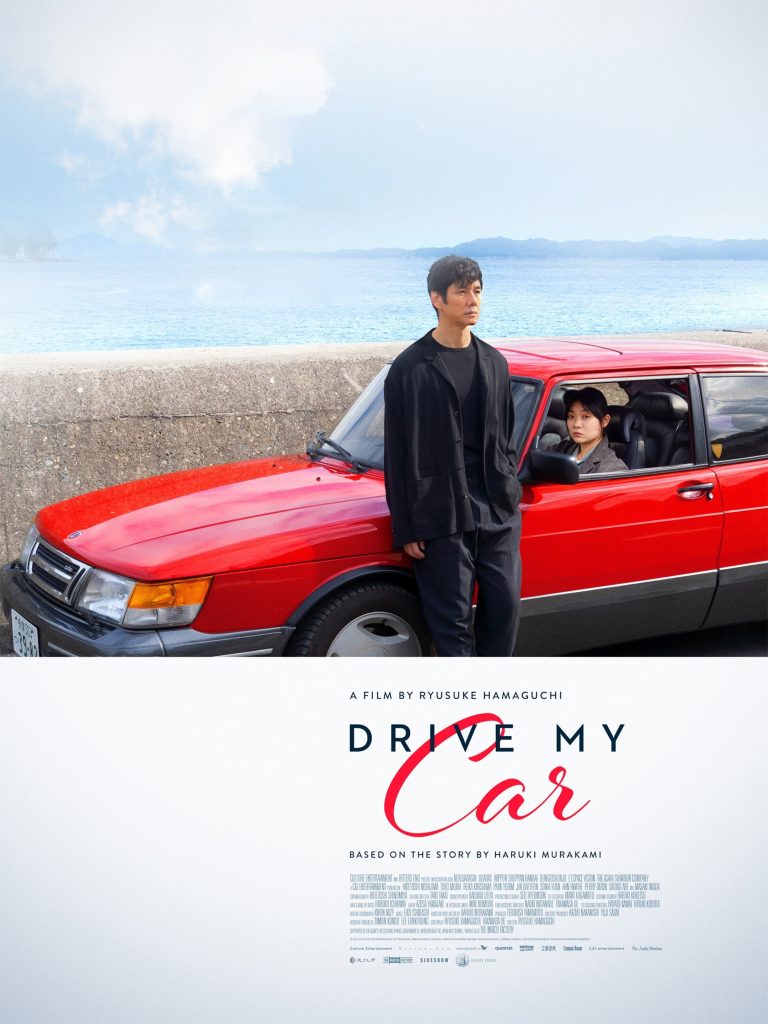


Leave a Reply